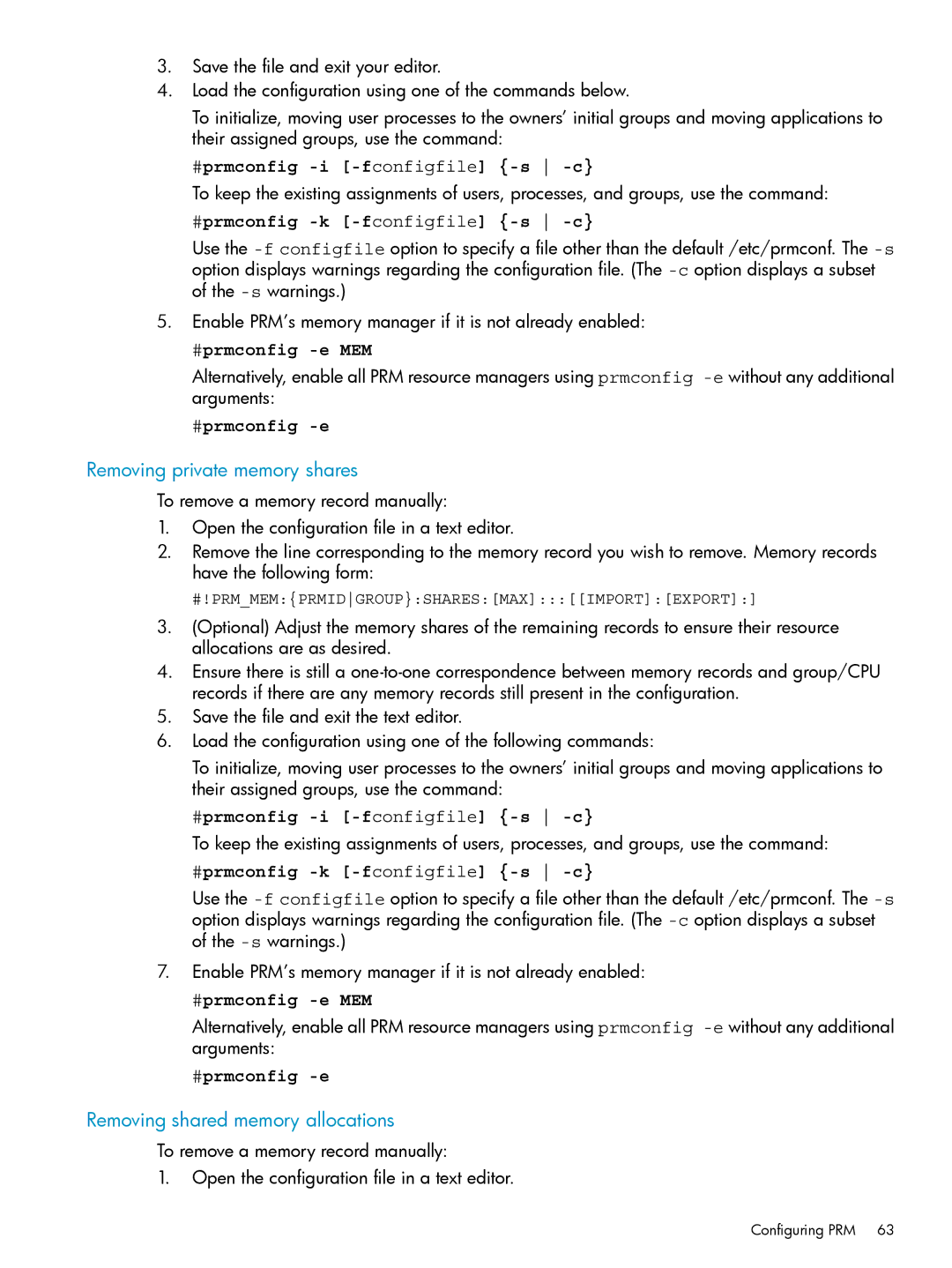3.Save the file and exit your editor.
4.Load the configuration using one of the commands below.
To initialize, moving user processes to the owners’ initial groups and moving applications to their assigned groups, use the command:
#prmconfig
To keep the existing assignments of users, processes, and groups, use the command:
#prmconfig -k [-fconfigfile] {-s -c}
Use the
5.Enable PRM’s memory manager if it is not already enabled:
#prmconfig -e MEM
Alternatively, enable all PRM resource managers using prmconfig
#prmconfig -e
Removing private memory shares
To remove a memory record manually:
1.Open the configuration file in a text editor.
2.Remove the line corresponding to the memory record you wish to remove. Memory records have the following form:
#!PRM_MEM:{PRMIDGROUP}:SHARES:[MAX]:::[[IMPORT]:[EXPORT]:]
3.(Optional) Adjust the memory shares of the remaining records to ensure their resource allocations are as desired.
4.Ensure there is still a
5.Save the file and exit the text editor.
6.Load the configuration using one of the following commands:
To initialize, moving user processes to the owners’ initial groups and moving applications to their assigned groups, use the command:
#prmconfig
To keep the existing assignments of users, processes, and groups, use the command:
#prmconfig -k [-fconfigfile] {-s -c}
Use the
7.Enable PRM’s memory manager if it is not already enabled:
#prmconfig -e MEM
Alternatively, enable all PRM resource managers using prmconfig
#prmconfig -e
Removing shared memory allocations
To remove a memory record manually:
1.Open the configuration file in a text editor.
Configuring PRM 63
